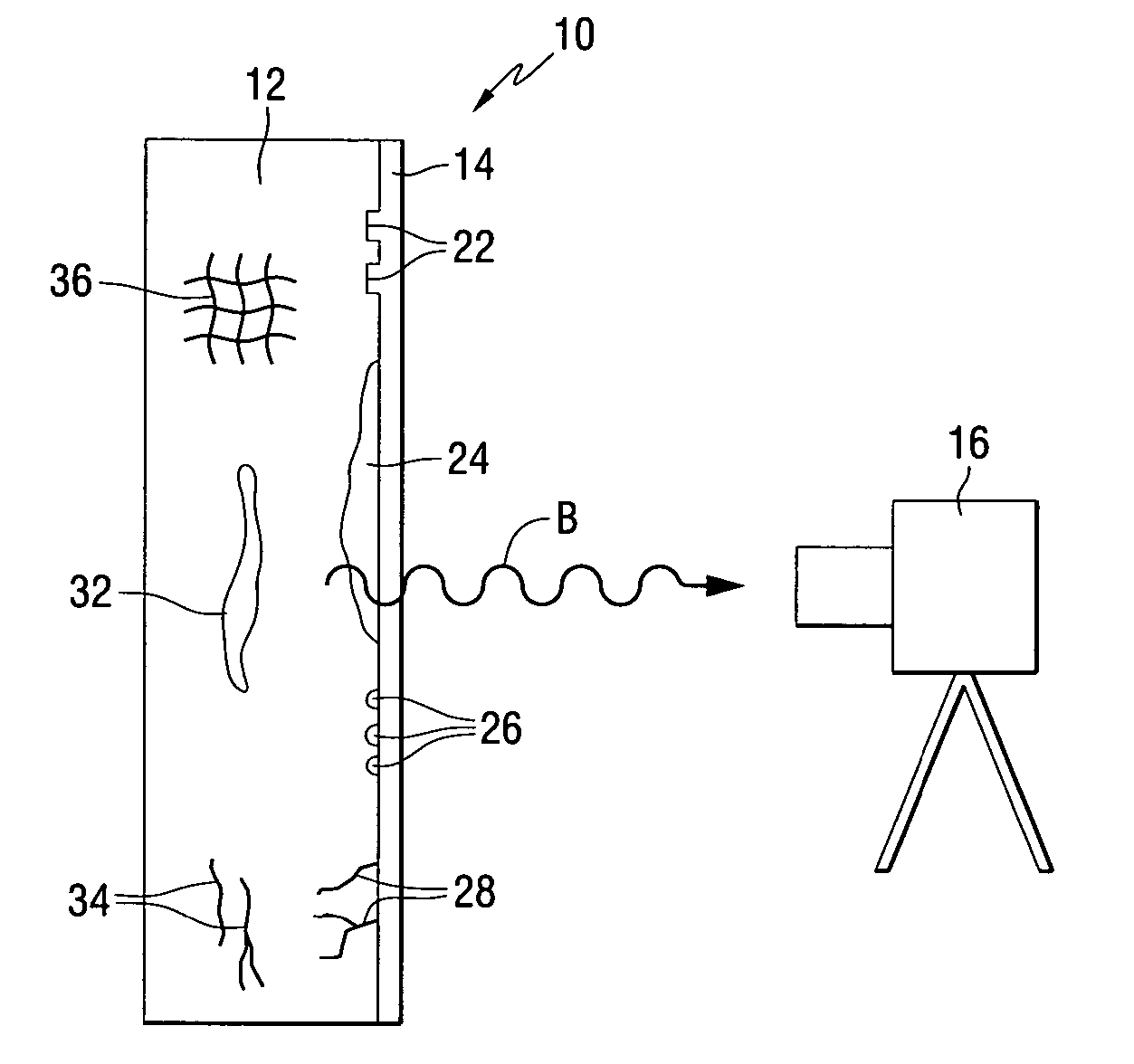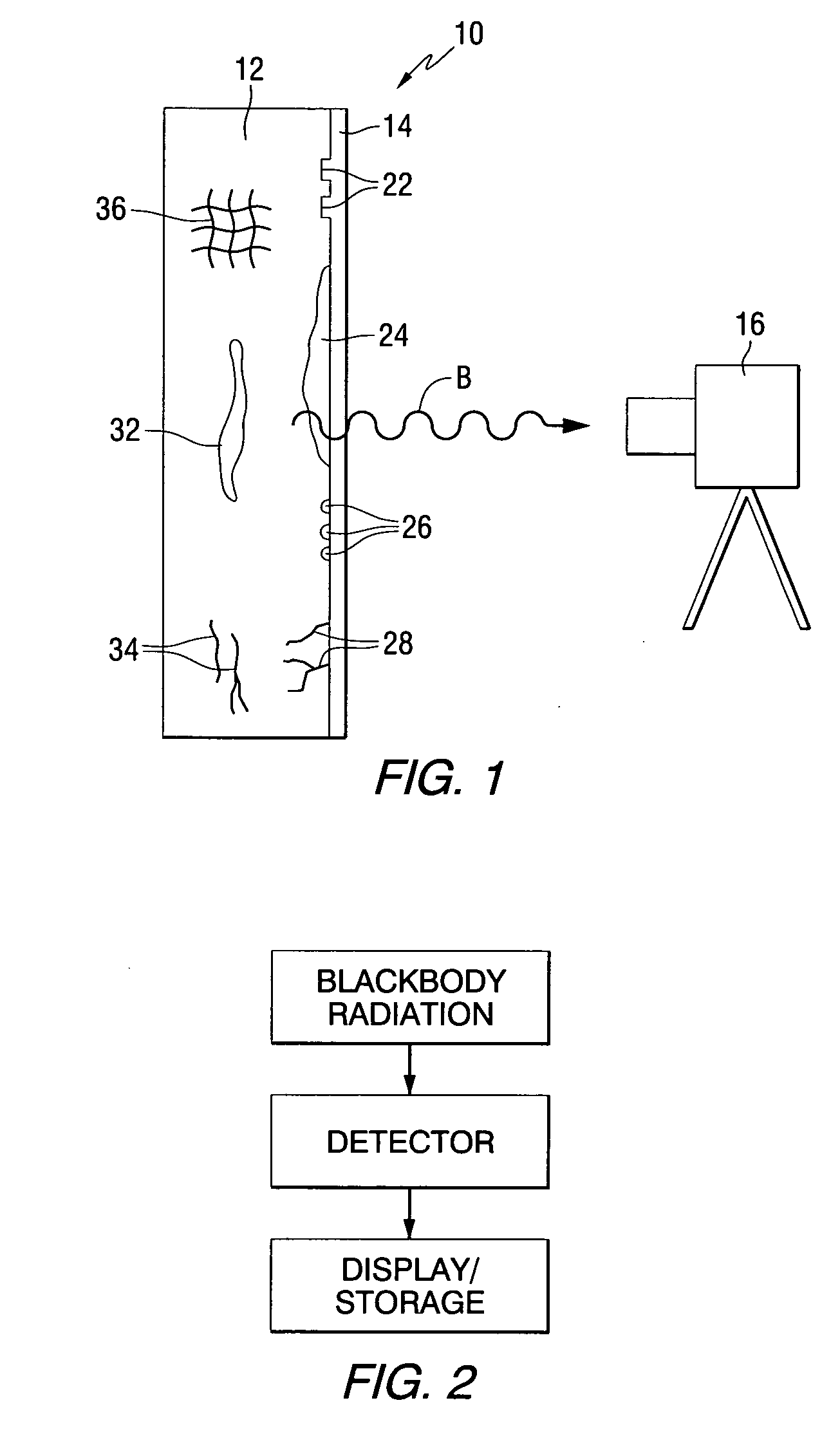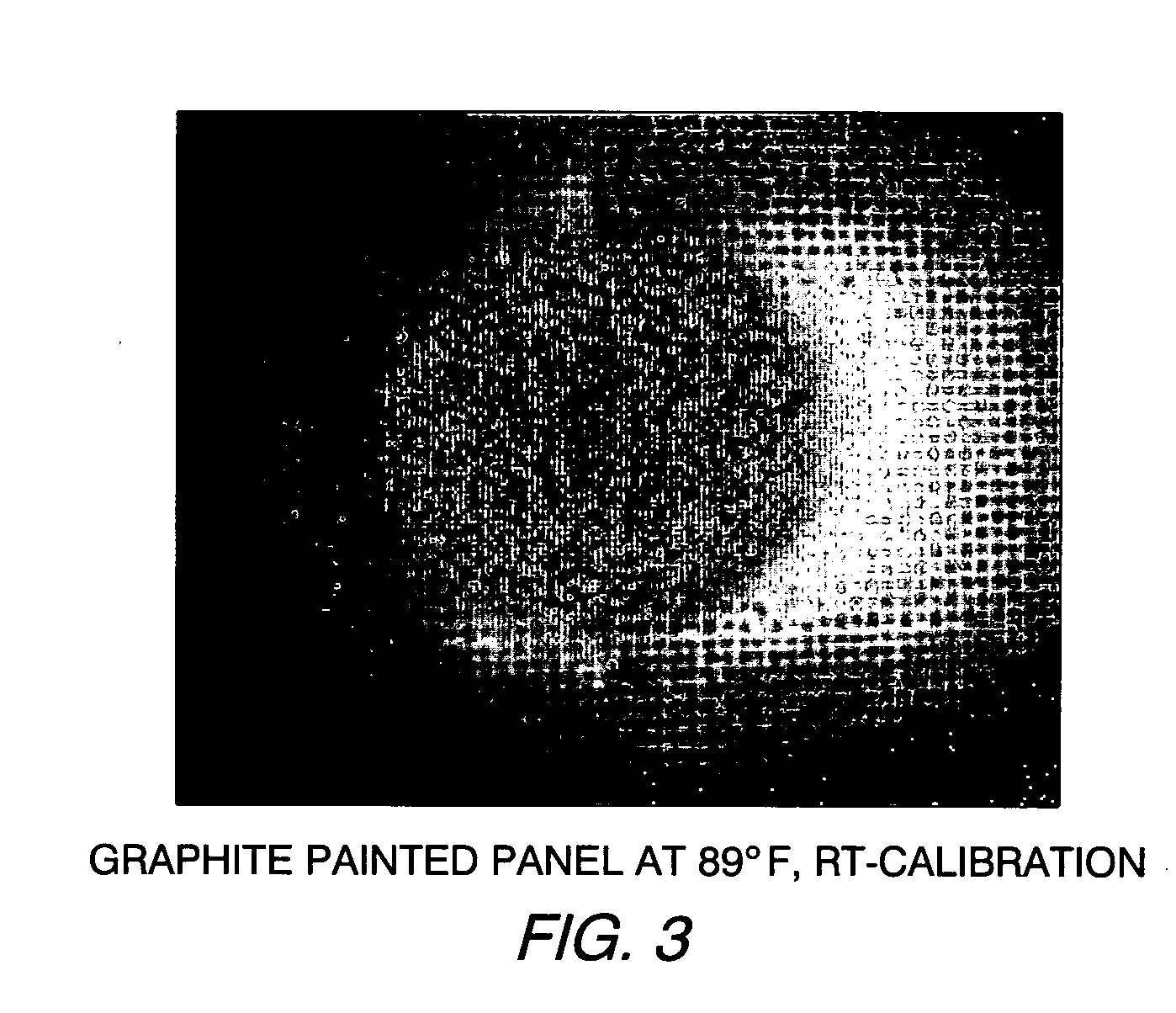System for detecting structural defects and features utilizing blackbody self-illumination
a self-illuminating and structural technology, applied in the field of structural features detection, can solve the problems of constant degradation of aircraft components, inability to eliminate them completely, and inability to mitigate the effect of coating of paint, so as to maximize the viewing clarity of defects and selectively view defects
- Summary
- Abstract
- Description
- Claims
- Application Information
AI Technical Summary
Benefits of technology
Problems solved by technology
Method used
Image
Examples
example 1
[0030] As shown in FIG. 3, a painted graphite panel comprising epoxy graphite with an epoxy primer and urethane top coat paint was imaged with a mid-IR camera at the wavelength of 3 to 5 microns. During the imaging process, the panel was held at 89° F. The panel was subjected to a room temperature calibration which involved adjusting pixel intensity to make focal plane uniform and linear within selected room temperature (RT) calibration.
example 2
[0031] As shown in FIG. 4, a painted graphite panel comprising epoxy graphite and epoxy primer and urethane top coat paint was imaged with a mid-IR camera at a wavelength of 3 to 5 microns with the panel held at a temperature of 90° F. The panel was subjected to hot calibration at a temperature of 84° F. The hot calibration process involved adjusting pixel intensity to make focal plane uniform and linear within selected 84° F. calibration.
example 3
[0032] As shown in FIG. 5, a composite panel comprising epoxy graphite and laminated copper fiber painted with epoxy primer and urethane top coat was imaged with a mid-IR camera at a wavelength of 3 to 5 microns, with the panel maintained at a temperature of 90° F. The panel was subjected to hot calibration at 84° F., as described above.
PUM
| Property | Measurement | Unit |
|---|---|---|
| temperature | aaaaa | aaaaa |
| temperature | aaaaa | aaaaa |
| temperature | aaaaa | aaaaa |
Abstract
Description
Claims
Application Information
 Login to View More
Login to View More - R&D
- Intellectual Property
- Life Sciences
- Materials
- Tech Scout
- Unparalleled Data Quality
- Higher Quality Content
- 60% Fewer Hallucinations
Browse by: Latest US Patents, China's latest patents, Technical Efficacy Thesaurus, Application Domain, Technology Topic, Popular Technical Reports.
© 2025 PatSnap. All rights reserved.Legal|Privacy policy|Modern Slavery Act Transparency Statement|Sitemap|About US| Contact US: help@patsnap.com



